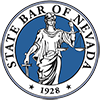When road rage results in a serious car accident or injuries, the driver who committed the offense can be held liable. According to NHTSA, approximately one-third of accidents that cause injuries and deaths on U.S. roads and highways are caused by aggressive drivers and road rage.
(Article continues below infographic)
![When Angry Drivers Cause Accidents [infographic] 1 Angry Drivers Cause Accidents](https://mattsharplaw.com/wp-content/uploads/2023/04/When-Angry-Drivers-Cause-Accidents-infographic.jpg)
______
Road Rage and Angry Drivers
Traffic studies done by the National Highway Traffic and Safety Administration (NHTSA) indicate that more than 50 percent of drivers have experienced angry drivers on the road. Many of these incidents end in dangerous car chases, drivers getting run off the road, and even drivers getting shot. Over a seven-year study, 12,600 injuries and 220 murders were attributed to road rage.
About 94 percent of all traffic accidents are caused by driver error, and 33 percent are linked to aggressive driving behaviors such as speeding, reckless driving, illegal procedures, and misjudging intentions of other drivers. About 66 percent of auto fatalities are caused by road rage or aggressive driving. Approximately 50 percent of drivers on the receiving end of road rage behavior respond with aggressive behavior themselves, and 37 percent of road rage incidents involve a firearm or deadly weapon. Aggressive driving and road rage incidents are higher among intoxicated or impaired drivers.
NHTSA defines road rage as a criminal offense when a driver intentionally means to cause harm. When car accidents are caused by road rage, liability falls on the driver who committed the offense. Many auto insurers exempt road rage accidents, because they are caused by intentional aggressive driving behavior rather than an accident. To avoid accidents and injuries, safety experts recommend the following precautions when encountering angry drivers on the road.
- Stay away from the driver – Slow down and let the aggressive driver pass, or change lanes if possible. If stopped at an intersection, allow the driver space to drive away.
- Don’t challenge or provoke the driver – Avoid eye contact with the aggressive driver and ignore the driver’s shouting, rude gestures, and foul language.
- Stay safe – If an angry driver follows, lock the car doors and drive to a nearby police station. Never stop and confront an aggressive driver, not even in a public place that seems safe.
- Get information – If confronted by an angry driver, get the license plate number and a description of the car. Record a photo or video of the car, if it’s safe.









